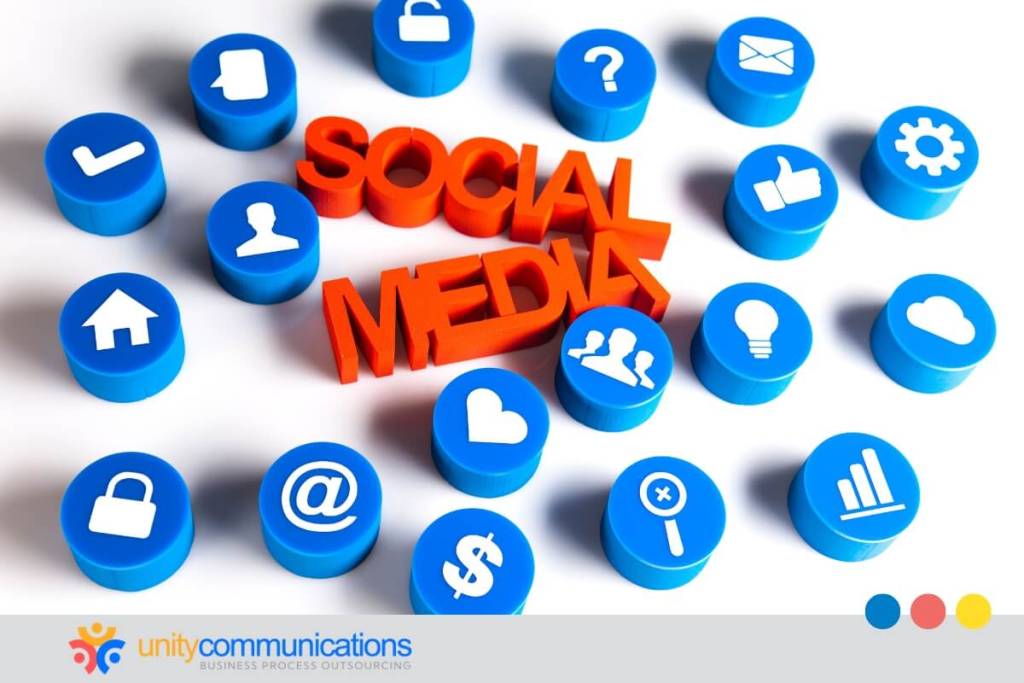Table of Contents
Growing e-commerce businesses struggle to handle their customer service operations. They must streamline their processes to satisfy customers.
But building a stable workforce is costly. You must hire the best talent and invest in resources. Fortunately, outsourcing your e-commerce customer service can be a cost-efficient solution.
But how much does e-commerce customer service outsourcing cost?
Learn about business process outsourcing (BPO) costs and explore the different pricing models.
The General Cost of Outsourcing

The BPO sector has grown in recent years. The global outsourcing market was worth almost $246 billion in 2021. It’s projected to reach $525.2 billion by 2030, with a compound annual growth rate (CAGR) of 9.1% from 2022 to 2030.
Given the figures, it makes sense for e-commerce businesses to invest in BPO. Deloitte notes that companies outsource primarily to reduce operating costs. So outsourcing is a practical solution for improving customer service operations.
Here we explore and explain the outsourcing costs that you may see as you invest in business process outsourcing.
Average Outsourcing Costs per Region
Outsource Consultants produced an exclusive report on the global outsourcing industry. The report shows the average hourly costs charged by big and medium BPO companies per region:
North American companies can leverage domestic outsourcing’s proximity, language skills, and cultural affinity. Based on the report, onshore outsourcing is the most expensive, but the study expects to see emerging BPO markets in smaller U.S. and Canadian cities with lower costs.
BPO companies in European countries have lower outsourcing costs than onshore service providers. Businesses can also enjoy travel ease, subtle cultural differences, and English competency. The BPO sector is well-established in Northern, Southern, and Western Europe. But expect BPO developments in Eastern Europe.
Nearshore BPO is more affordable than domestic and European outsourcing. Companies can also leverage the ease of travel and subtle cultural differences. Plus, they can take advantage of English, Spanish, and Portuguese language skills.
According to the report, offshoring to Asia and the Pacific region is the most cost-efficient for large and medium businesses. Companies can rely on English skills and languages such as Mandarin and Hindi. But they must address travel challenges and cultural differences.
Africa is the most affordable region to outsource, particularly for large companies. Countries such as South Africa and Egypt have already established themselves as BPO hubs. But expect other African countries to follow suit.
The Impact of the Pandemic on Outsourcing Costs
Outsource Consultants also highlights the pandemic’s impact on BPO companies. Business disruption in this period, for instance, forced call center employees to work remotely.
Unfortunately, businesses lacking residential infrastructure discontinued their services. Those with residential cloud technology and internet access seamlessly transitioned to remote work.
Remote work has paved the way for cost reduction in outsourcing. BPO companies can save on infrastructure maintenance costs, utility expenses, and property leases. But they must invest in digital tools and technologies for their remote employees.
E-commerce businesses have started outsourcing data entry services, order fulfillment, and inventory management due to operational challenges and increasing consumer demands. Online sales increased from about $2 trillion in 2019 to $2.5 trillion in 2020 and to almost $3 trillion in 2021.
Outsourcing can be beneficial to click-and-order businesses for cost reduction and continuous operations. It is a cost-efficient solution for fast e-commerce growth and expansion.
The Outsourcing Cost of E-commerce Customer Service

E-commerce businesses can use various channels for their outsourced customer service operations. These include outsourcing email support, live chat, call center services, and omnichannel solutions.
But how much does e-commerce customer service outsourcing cost? Tips for outsourcing customer service include looking into costs per operation.
Call Center
A call center is ideal for e-commerce customer service outsourcing. It’s better if customers can talk to live BPO agents over the phone. Trained representatives can answer questions, process orders, provide updates, and resolve issues.
Below is the average outsourced call center pricing:
- United States/Canada: $20 – $30 per hour
- Western Europe: $40+ per hour
- Eastern Europe: $12 – $25 per hour
- Australia: $35 – $55 per hour
- Africa/Middle East: $15 – $20 per hour
- Latin America: $8 – $18 per hour
- Asia/Philippines: $8 – $14 per hour
- India: $6 – $10 per hour
Live Chat
Another ideal channel for e-commerce customer service outsourcing is live chat. Some customers prefer to live chat with representatives instead of speaking with them. About 79% of companies have realized the benefits of live chat for business growth.
According to ProProf Chats, the outsourcing cost of live chat ranges from $25 to $65 monthly per BPO agent. Below are the four types and their average costs per month.
- Free live chat: $0.00
- Pay-per-agent: $15 – $60
- Pay-per-lead: $15 – $35
- Volume-based pricing: charged based on the conversations
Email Support
Email is best for boosting efficiency when a company outsources e-commerce customer service. Some customers would rather email their concerns than talk to live representatives.
Email support also enables customers to write detailed descriptions. It’s ideal for order fulfillment, product delivery, and when a company has outsourced inventory management. Specialists can provide updates on the order status via email.
There is no standard cost yet established for email support. The pricing depends on the BPO service providers and the scope of work. But based on research, the average hourly rates of U.S. email specialists as of writing are the following:
In most cases, BPO service providers offer fully scalable email services. These include email specialists and the resources used. Get quotes from various BPO companies, compare pricing, and decide which to hire.
Social Media Channels
As of April 2022, there are 4.65 billion social media users worldwide. People use social media for personal interactions and business purposes. Companies use digital marketing channels such as Facebook, Instagram, LinkedIn, and YouTube.
Also, online entrepreneurs use Facebook and Messenger for e-commerce customer service outsourcing. These channels are best for answering frequently asked questions (FAQs) for products and engaging with customers. They are also useful for taking orders and providing updates.
You can use social media for your customer service for free. The cost only starts when you outsource to social media managers. But, of course, the rates vary depending on their field of specialization and scope of work. The average monthly salaries of social media managers in the U.S. are:
Omnichannel Solutions
Omnichannel solutions involve using different channels for customers’ benefit. For instance, you do not only outsource customer support to a call center. You also tap into a BPO company for your email and chat support. You can even go as far as using social media channels for your customer service.
If you plan to save, hire a BPO company providing a call center, live chat, and email support. Check the contract if it includes the three services.
Different BPO Pricing Models

BPO companies help businesses of all sizes control operating costs on top of scaling operations and growing small and medium-sized enterprises (SMEs).
Over the years, the BPO pricing structure has significantly changed. Companies should know the different pricing structures to make informed decisions. After all, an effective pricing contract is integral to long-term BPO success.
For outsourced e-commerce customer service, consider one of these BPO pricing models:
Fixed Price (FP) Model
The FP model has a standard rate the BPO company sets for its services. You and the service provider agree on monthly or yearly payments. The charge covers labor and production costs, including materials, tools, equipment, technologies, and other resources.
Staffing Model
The staffing model involves contracting a workforce for a specific period. It also includes the costs for infrastructure, materials, tools, equipment, and other resources. This model works best for offshore or nearshore outsourcing.
Time and Materials (T&M) Model
The T&M model bills you according to the time it takes to complete a project. You pay for the billed hours and the resources used. This pricing structure applies to long-term IT outsourcing projects. It’s a lot cheaper than the FP model.
Cost Reimbursable Model
Let a BPO company set limits on its consumable expenses. Once your service provider exceeds the limit, you’ll pay a certain percentage. You can best differentiate this pricing model from the FP model. The latter requires you to pay a fixed rate regardless of the consumed expenses.
Consumption-based Pricing Model
The consumption-based pricing is what it sounds like—billed based on the usage. You can enjoy its cost flexibility because you’ll only pay for what you use monthly or yearly. This pricing structure is ideal for cloud-based services.
Incentive-based Pricing Model
This model is a great way to reward your BPO company. Give your service provider incentives for good performance or extra services. That’s on top of the regular service charge. This approach is ideal for motivating your BPO employees.
Profit-sharing Pricing Model
A profit-sharing pricing model is also a reward for your BPO service provider. When your business has earned enough profits, you can share these with the rest of your team. You can include this pricing model in the contract to motivate your hired BPO company.
Shared Risk-reward Pricing Model
Take two businesses working toward a common goal. That’s the share risk-reward pricing model. Your e-commerce business can partner with a shipping company to deliver products. The two parties share the capital and profit from doing business together.
The Bottom Line
The e-commerce sector is a growing industry. Click-and-order stores should capitalize on this to boost profits. They should optimize their front-office operations to make their customers completely satisfied.
But instead of hiring talent and investing in resources, use BPO. Outsourcing doesn’t only improve your customer service function; it also reduces your operating costs.
Consider the outsourcing cost of e-commerce customer service discussed above. With this in mind, you’ll make informed BPO decisions to please customers, boost sales, and achieve e-commerce success.




